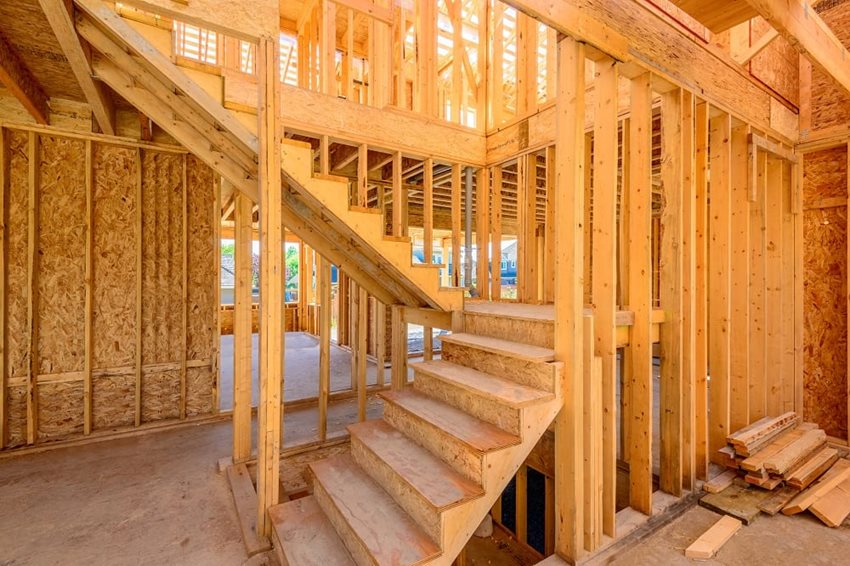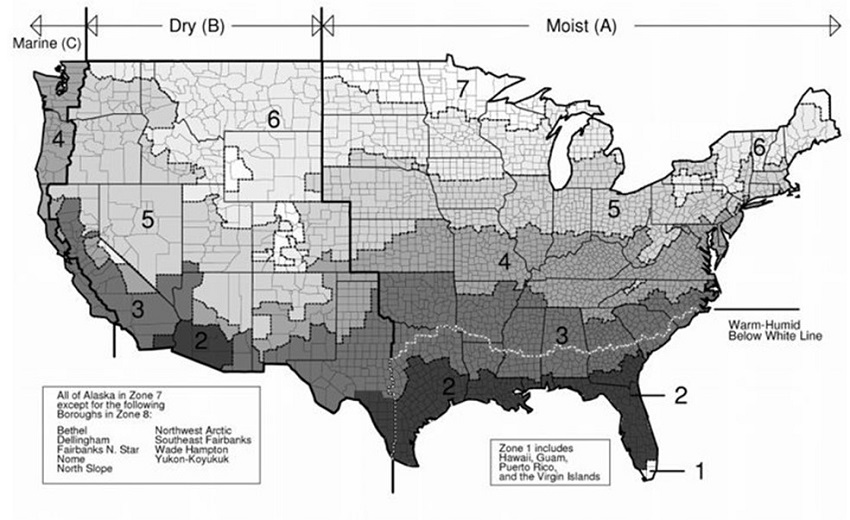December 28, 2021
Categories: Tools
When you think “new house” the first things that comes to mind are probably the most obvious… how many stories, the number of bedrooms, the exterior colors and what the interior will look like. It’s exciting to dream about the particulars, from the finish on appliances to the countertops and tile in your kitchen and baths. What might initially warrant less of our thought is what’s inside the walls. The old adage “out of sight, out of mind” most certainly applies. But while it might be less entertaining to think about, it’s still helpful knowledge to have.

Residential homes are comprised of interior and exterior walls. The exterior walls are the weather-facing walls on the outside of our home that make up part of the home’s thermal envelope. Walls are constructed with studs and filled with insultation; they are required to be constructed to set standards, called building codes. Most of us take for granted that our builder is constructing our home to the building codes set forth by our respective municipality. We also take for granted that our walls will be thermally efficient, keeping air-conditioned space inside the home at our preferred temperature. Let’s learn how this works.
The International Residential Code
Less than a decade ago (in 2014), the state of South Carolina adopted the International Residential Code and it was put into effect on July 1, 2016 and has since been updated in 2018. These international standards dictate the “norm” for residential construction. Should you care to read them, you can find them online.
According to South Carolina Department of Health and Environment, “The International Code Series was developed as a joint project by the Southern Building Code Congress, International, the International Conference of Building Officials and the Building Officials and Code Administrators International and will replace the Standard, National and Uniform Building Code Series. The 1997 Editions of the Standard, National and Uniform Codes (which were regional), and the 1995 Edition of the CABO One- and Two-Family Dwelling Code (which was national) were the last to be published. The International Building Code Series will replace those documents as a single set of National Codes. All codes training and Code Enforcement Officer certification examinations will be based in the International Code series.”

Image from International Code Council Website (Source)
The International Residential Code
In looking at the map above, you’ll see that the country is divided into regional zones established by relative temperature and humidity. South Carolina lies in the 3A zone where we have at least four months with mean temperatures over 50 degrees. The climate here is damp and humid, and the applicable codes reflect our climatic factors. Codes require that our walls be constructed to help save energy and make our homes healthy and safe.
Particularly with new construction homes, we assume that our home will be well insulated and built to code. But it’s important to take into consideration if “code” is really sufficient for what we expect out of our home. “Codes” are today’s minimum standard, and minimum is just that, minimum.” Builders however tend to surpass “code” and beef up the insulation in homes to increase our energy savings.
“Code” is basically a set of rules that have been developed to govern the way homes are built...Minimum code makes sure a house won’t fall down...consider, minimum code is minimum value…
There is code that relates directly to efficiency and the homes performance — minimum R-value for insulation...if more insulation is added, that means less heating and cooling costs.
Minimum isn’t ideal but, minimum code is better than no code.
South Carolina also adheres to the
2018 IECC Compliance Guide for Homes that was put into effect in January of 2020. These codes are based on the International Residential Building Codes and are projected to save money for South Carolinians over a 30-year life cycle. The International Residential Code provides thefollowing standards for buildings in Zone 3.
Minimum R-value per code for wood framed walls is R-20. The International Residential Code requires “20 or 13 + 5h. The first value is the cavity insulation, the second value is continuous insulation so 13 + 5 means R-13 cavity insulation plus R-5 continuous insulation. Continuous Insulation is insulating material that is continuous across all structural members without thermal bridges other than fasteners and service openings. It is installed on the interior or exterior, or is integral to any opaque surface, of the building envelope.
If this sounds like Greek to you, don’t worry. Just ask your builder to demonstrate how they meet or exceed code for walls. When looking at homes by various builders, ask them about the wall’s thermal rating. Ask to see examples of their wall construction so you can comprehend how the builder is complying with both the International Residential Code and the 2018 International Energy Conservation Code.
Many Lowcountry builders are proud of the smart solutions they’ve developed to keep walls compliant and will happily explain these methods to you. In fact, some make it a point to teach their homeowners about the inner workings of their new home as part of the building process. Some provide their homeowners with an Orientation before walls are finished. Ask your builder if during your Orientation, will you get to know your new home by seeing the mechanical, electrical, and plumbing inside the unfinished walls? This helps create an understanding of where things are and how they work.
You’ll find all the
building professionals we include in
Charleston New Homes Guide build homes which are code compliant, and in many cases, beyond code. Their goal is for you to live happily in the home which they are constructing for you. So, go ahead, consider the walls and don’t be shy about asking your potential home builder to explain more!
###
Thank you for reading and sharing our articles from The Greater Charleston New Homes Guide. Our business is to know Charleston, SC's new home construction, home builders, neighborhoods, and homes so we may assist you as you take your new construction home journey. Please take the time to explore our site. The Greater Charleston New Homes Guide is considered the best and most reliable ‘local’ resource to new home construction, builders, neighborhoods, and homes throughout the Lowcountry since 2004.
12.21
Categories: Tools